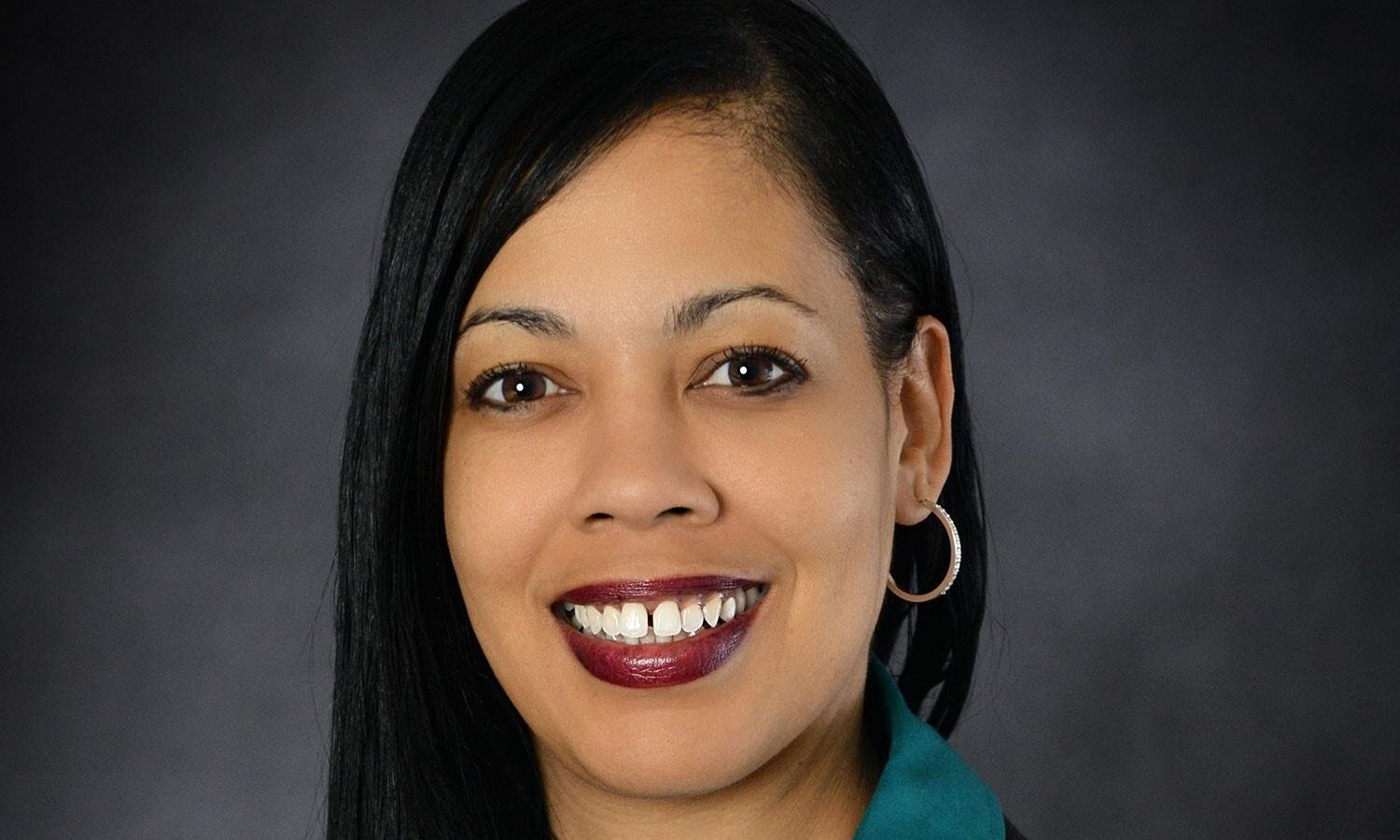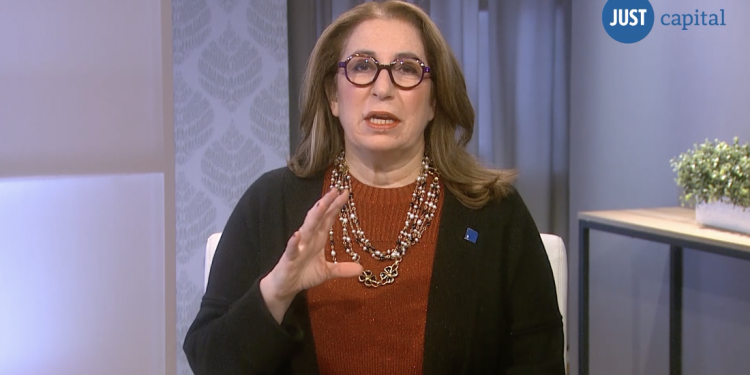Intel’s Chief Diversity Officer Explains Why the Company Is Spearheading a Tech Alliance Around Racial Equity, and Shares What It’s Already Learned

(Intel)
Intel did not have to radically rethink its business strategy when the George Floyd protests brought America to a reckoning with racial inequity. It’s been publicly sharing its diversity data filed in the federal government’s EEO-1 report for 20 years, has the highest level of wage data transparency among companies JUST Capital tracks, and in 2015 it dedicated $300 million to improving the diversity of its workforce. The moment did, however, provide the company with an opportunity to rethink the bigger picture.
Dawn Jones took over the role of head of diversity and inclusion from Barbara Whye earlier this year, first on an acting basis and then full time this month. As she told JUST in a recent interview, Intel’s leadership saw an opportunity. “A lot of companies have spent hundreds of millions of dollars in this work, trying to try to figure it out,” she said. “And we looked across the landscape and said, why are we not working together?”
That idea came to fruition on Thursday with the launch of the Alliance for Global Inclusion, whose goal is developing a shared set of metrics and standards around diversity, equity, and inclusion. Its founding partners are Intel, Dell, Nasdaq, NTT Data, and Snap, and each will be sharing best practices among each other and making results public. It’s a coalition approach that has previously been used, for example, with apparel makers tackling sustainability challenges and chemical companies developing health and safety standards.
The Alliance for Global Inclusion’s initial areas of focus are leadership representation, inclusive language internally and externally, inclusive product development, and youth STEM education in underserved communities. Jones told us that the alliance will “start small” as members learn to work together, but noted that “we are encouraged that as we grow, our goals will be bolder.” The Alliance is intended to grow over time, and to expand into other industries. Jones said that growth is built into the aim of the coalition, as “no one company is going to be able to do it alone.”
The Need for Accountability and Transparency
As we have seen in our own Corporate Racial Equity Tracker, America’s largest companies have a wide range of interpretations of what qualifies as diversity, equity, and inclusion (DEI) due to a lack of diversity and inclusion standards, and disclosures are still often obfuscated.
The challenge, Jones said, is that it is easy to be wary of transparency when the desired results are not yet there and workers (and, increasingly, investors) are demanding accelerated progress. Intel found, however, a benefit to transparency even in its early stages of its DEI journey, and is one of the 18 companies in our Tracker that has at least one disclosure on commitments and actions addressing six dimensions of racial equity we cover. Intel wants to bring that approach to its partnership.
Last year, Intel surveyed 13 large companies on their DEI policies and brought together the results in what became the Alliance’s Diversity & Inclusion Index, available to the public online.
You can find most successful practices (like reporting of racial pay equity, and a formal feedback mechanism for concerns around inclusion) as well as least successful (such as finding incentives for establishing diverse mentorships, and training for managers to speak about inclusion, and what the demographic makeup is of the participating companies.
While the initial survey was small, the results are detailed, and the alliance’s partners used the results to reach their first four areas of focus. Jones and her counterparts will meet twice annually to discuss progress on the year’s focal points, and will conduct another survey in the fall, which will guide additional areas of growth.
This year’s goals are as follows:
- Develop diversity guidance for boards and CEO direct reports. Share this information externally as well as with each partner’s own board.
- Work with relevant organizations and academics to develop a set of inclusivity language to be used both internally and externally. Make this available to other interested companies, as well.
- Create a forum in which to develop best practices on removing racial bias from artificial intelligence product development.
- Collectively work with nonprofits to fund technology access and complementary support for children in underserved communities with the aim of improving STEM readiness.
“We feel like by advancing the work that we’re doing in this space, Intel will become a better place to work. We’ll be more competitive in a business sense,” Jones said, speaking not only for Intel, but reflecting the general approach of the alliance. “And we have a commitment and a responsibility to the communities that we work in, as well as our employees.”
Foundational lessons
While Jones acknowledged that large-scale progress is still down the line, she and her team’s experience at Intel is driving the alliance’s work.
Of utmost importance is buy-in from the very top of organizations. “It starts with leadership,” Jones said. She explained that the traditional approach of siloing DEI work is destined to fail, and rather has to be integrated into the company’s strategy from the top down. “This work really has to have the support and backing of leaders,” she said. “So anyone interested in creating a more diverse workforce, a more equitable workforce, you need to have your leadership behind it in words, actions, and role modeling.”
And in making that case, she doesn’t believe that there should be separate moral and business arguments. She’s seen at Intel, and there is years of research, that companies with inclusive cultures yield better employee engagement and better decision-making for serving customers. And investing in communities and exploring new talent development pipelines have proven to add value to companies. But, she said, it’s a mistake to try to determine an easily calculable ROI on each DEI goal. “How can we leverage our vast resources to help impact our communities and our economy in a way that it may not have a direct impact on your business,” Jones said, “but rather benefits society as a whole? When the communities – and national economies – companies operate in are stronger, the companies benefit, as well.”
“We are a part of society as businesses,” she said. “We employ thousands of people who go out into these communities and their families are impacted by some of the things that are happening. And when your family is impacted, you bring that with you to work and that impacts your ability to perform. So it is all interconnected.”
Finally, Jones said that Intel takes a tech approach to diversity and inclusion, and it’s one that will also guide the alliance. “You learn, you fail fast, you iterate often, you continue to create new solutions for the new problems that are sometimes compounding the old,” she said. And when that data is made public, the layer of accountability adds necessary urgency to improve, or else get left behind.





